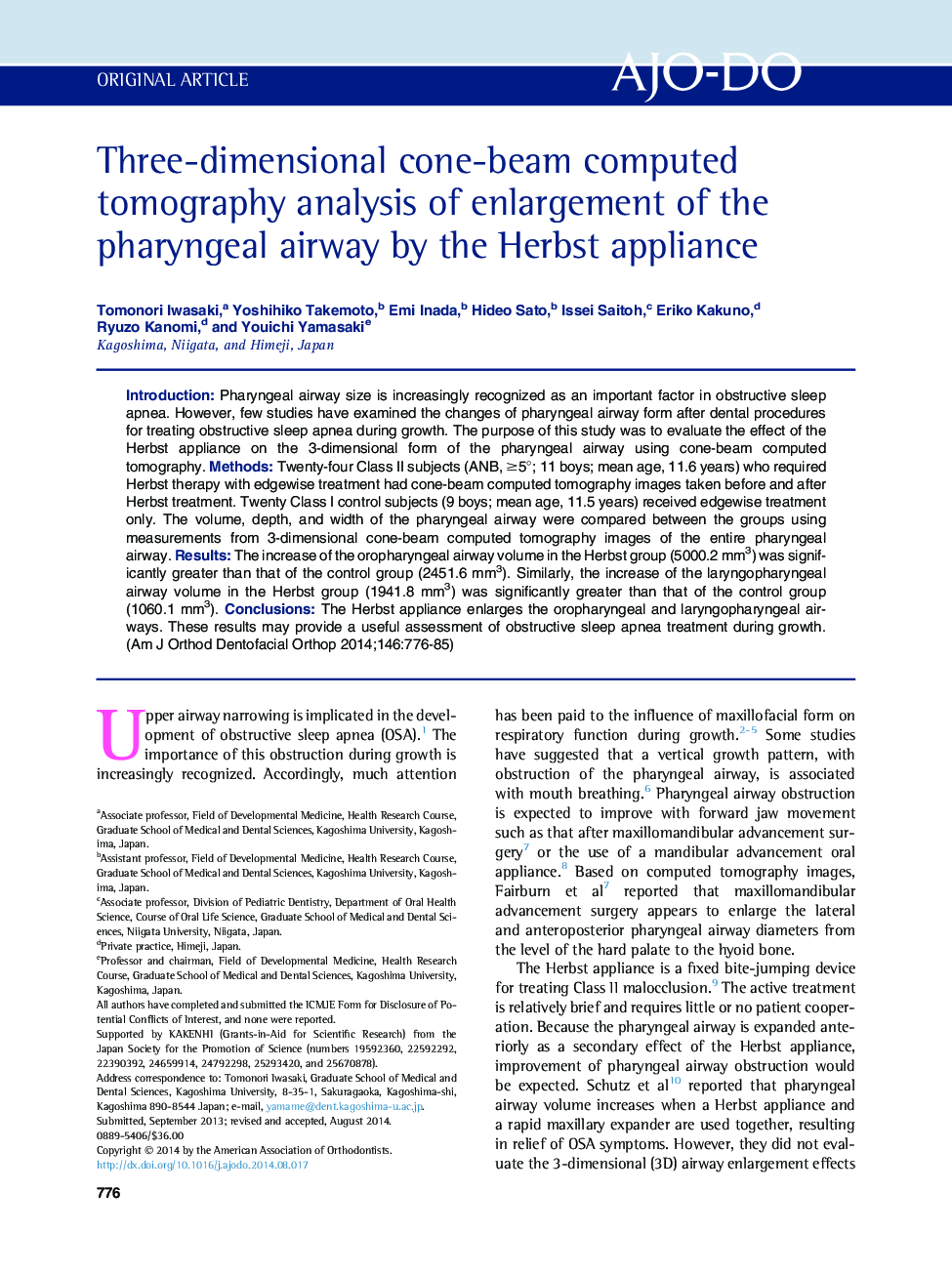| Article ID | Journal | Published Year | Pages | File Type |
|---|---|---|---|---|
| 3116114 | American Journal of Orthodontics and Dentofacial Orthopedics | 2014 | 10 Pages |
•Herbst therapy led to increases in pharyngeal airway volume in boys with Class II malocclusion.•Depth of the oropharyngeal and laryngopharyngeal airways increased.•Width of the oropharyngeal airway increased.•Herbst appliance therapy might be useful for patients with obstructive sleep apnea.
IntroductionPharyngeal airway size is increasingly recognized as an important factor in obstructive sleep apnea. However, few studies have examined the changes of pharyngeal airway form after dental procedures for treating obstructive sleep apnea during growth. The purpose of this study was to evaluate the effect of the Herbst appliance on the 3-dimensional form of the pharyngeal airway using cone-beam computed tomography.MethodsTwenty-four Class II subjects (ANB, ≥5°; 11 boys; mean age, 11.6 years) who required Herbst therapy with edgewise treatment had cone-beam computed tomography images taken before and after Herbst treatment. Twenty Class I control subjects (9 boys; mean age, 11.5 years) received edgewise treatment only. The volume, depth, and width of the pharyngeal airway were compared between the groups using measurements from 3-dimensional cone-beam computed tomography images of the entire pharyngeal airway.ResultsThe increase of the oropharyngeal airway volume in the Herbst group (5000.2 mm3) was significantly greater than that of the control group (2451.6 mm3). Similarly, the increase of the laryngopharyngeal airway volume in the Herbst group (1941.8 mm3) was significantly greater than that of the control group (1060.1 mm3).ConclusionsThe Herbst appliance enlarges the oropharyngeal and laryngopharyngeal airways. These results may provide a useful assessment of obstructive sleep apnea treatment during growth.
